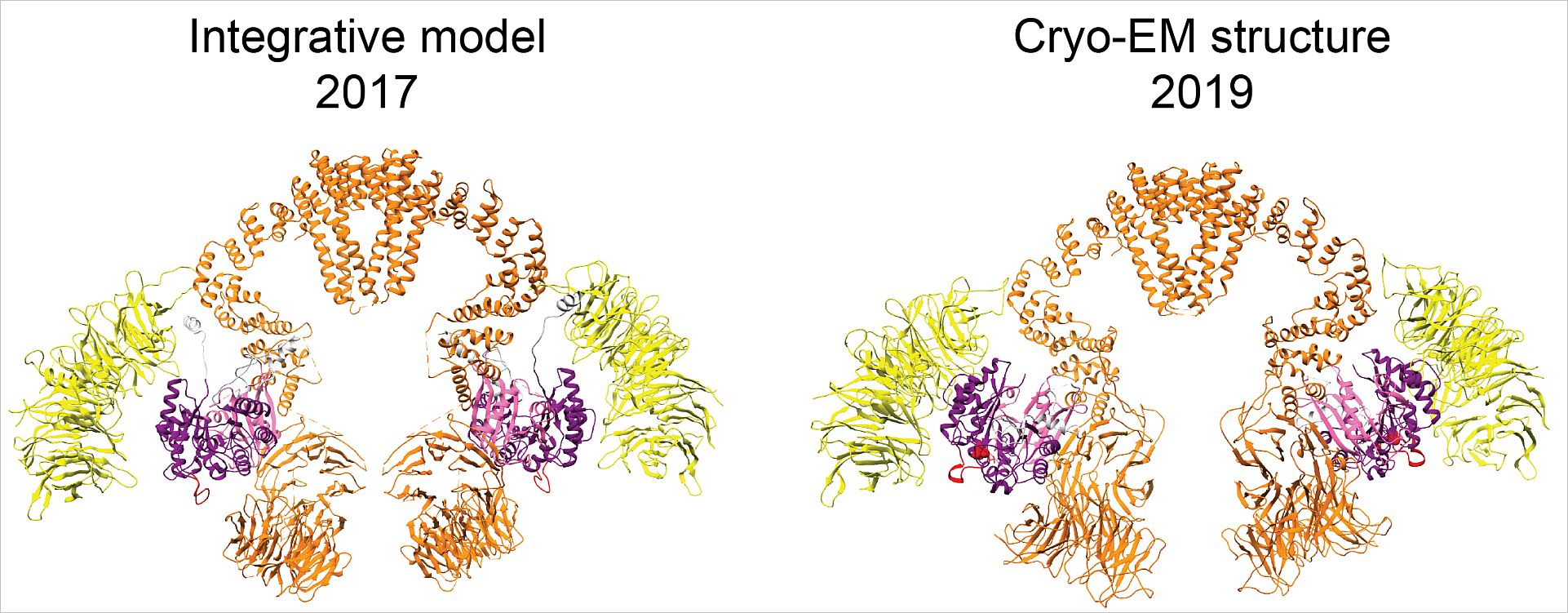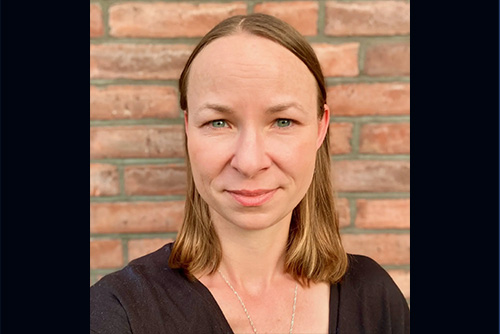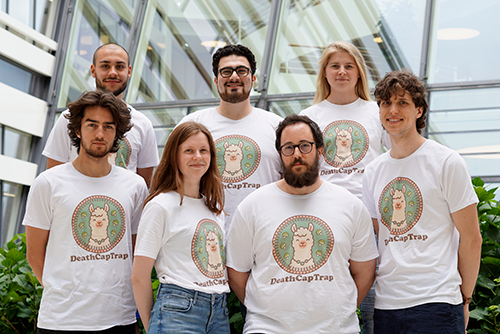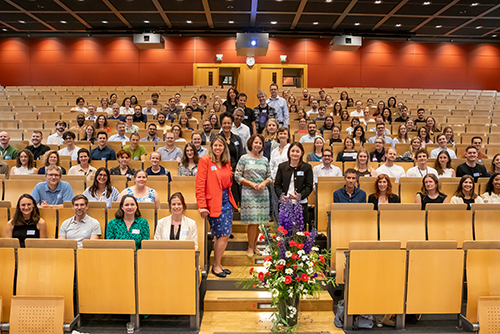A tRNA Modifier at Work
Cryo-EM reveals the structure of a piece of cellular machinery and confirms the power of integrative modeling
All living cells employ ribosomes and transfer RNA (tRNA) molecules to decode messenger RNA (mRNA) sequences and translate the genetic information into correctly assembled and functional proteins. It’s crucial for cells to produce these proteins at the right speed to avoid protein misfolding and aggregation within cells, which has been linked to a number of neurodegenerative diseases and cancer. The modification of tRNA molecules by specialised enzymes is one way to regulate the production speed to the correct pace.
Elongator: a large protein complex
CSSB scientist Jan Kosinski (EMBL Hamburg) in collaboration with researchers from the Müller group at EMBL Heidelberg and scientists from the Małopolska Centre of Biotechnology (MCB) at the Jagiellonian University in Krakow, Poland, and at Martin Luther University Halle-Wittenberg, Germany, have now managed to catch a crucial component of cellular modification machinery directly at work. Using cryo-electron microscopy (cryo-EM), they have determined the structures of a large protein complex called Elongator, in the presence and absence of its natural substrate tRNA.

Their results, published in Science Advances, are valuable for the protein synthesis research community. They allow for a more complete understanding of one of the key mechanisms in ribosome-mediated protein synthesis, where tRNA plays a central role as an adaptor molecule – it forms the physical link between mRNA and the amino acids to be assembled into proteins.
Integrative modelling
For the Kosinski group, the cryo-EM structure of Elongator marks another success. Two years ago, they published a model of Elongator built using a computational modelling method developed by Jan Kosinski. Comparing this model with the high-resolution cryo-EM structure shows a remarkable similarity between them – a clear demonstration of the power of so-called integrative modelling methods, which model structures based on data from various experiments. “We are very excited by the accuracy of the model, and are now working towards publishing our methods as easy-to-use software,” says Jan Kosinski. The group is also organising an EMBO Practical Course, to take place in November, where such integrative methods will be taught.
SOURCE ARTICLE
Dauden MI et al. Molecular basis of tRNA recognition by the Elongator complex. Science Advances. Published online 10 July 2019.
https://advances.sciencemag.org/content/5/7/eaaw2326
DOI: 10.1126/sciadv.aaw2326



